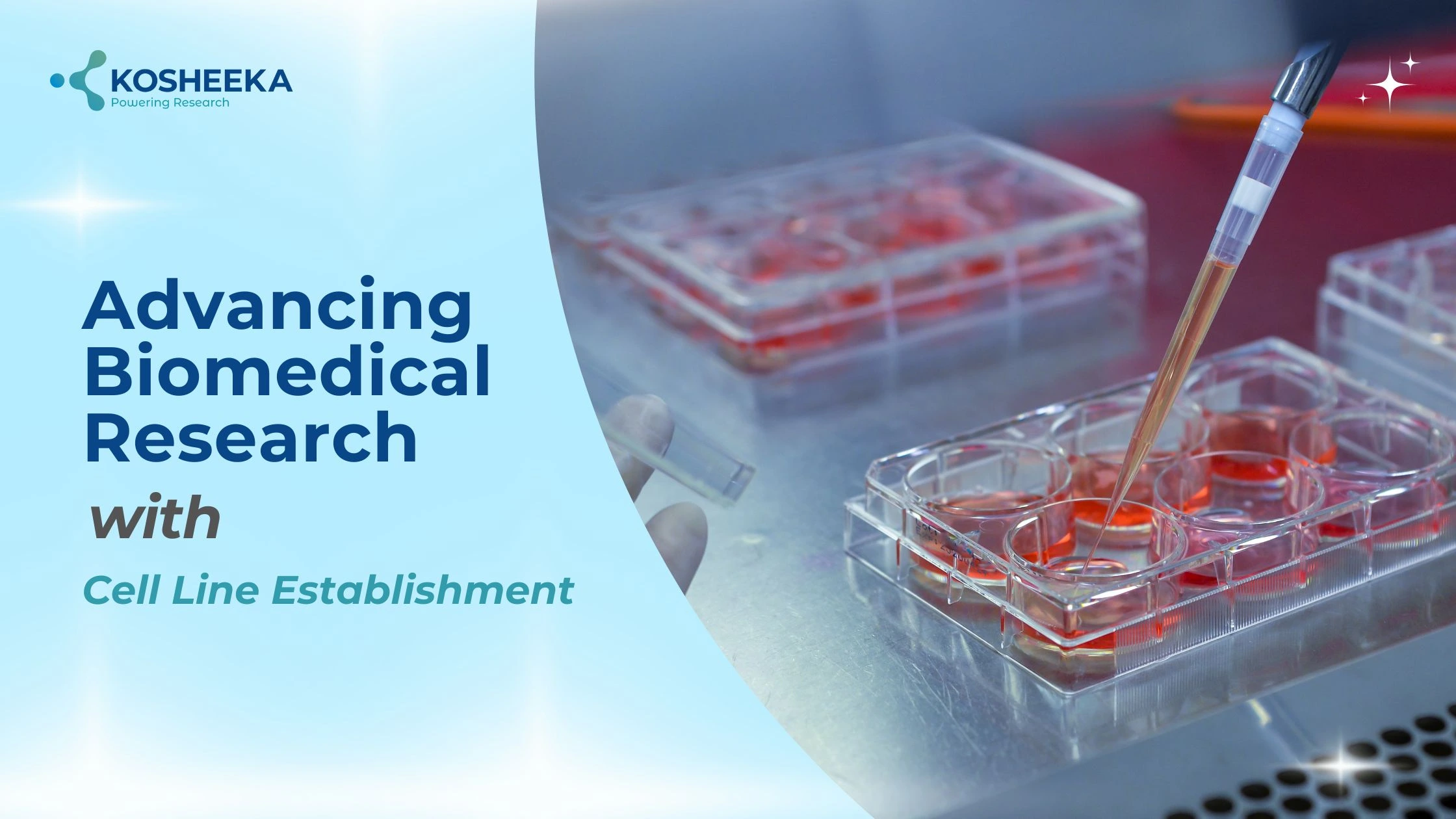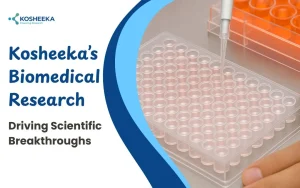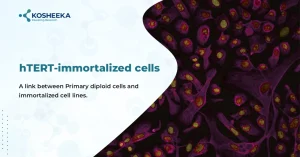Cell lines are indispensable resources in biomedical research. They have considerably accelerated drug discovery by facilitating gene therapy, disease modeling, and drug screening. They are an effective platform for research at the cellular and genetic levels. Technological advancements such as electron microscopy, sequencing, and three-dimensional culture have further deepened our knowledge base. The immense contribution of cells in biomedical research has prompted their generation. However, the process of cell line establishment is complex and demands meticulous handling.
Cell Line- Primary vs Immortalized
The first cell line was Hela cells, extracted from the cervical cancer patient Henrietta Lacks in the 1950s. Their continuous proliferation in the laboratory distinguished them from primary cells. In the same decade, Theodore Puck isolated Chinese hamster ovary (CHO) cells, which also exhibited indefinite growth even while originating from non-cancerous tissue. The concept of the cell line refers to indefinitely dividing cells. However, the definition of the term presently extends to the cells that have adapted to the laboratory environment, showing optimal growth. Therefore, they have been classified into the following:
Finite Cell Line: Primary cells with a definite life span are named finite lines after their first subculture. Examples include aortic smooth muscle fiber and liver fibroblasts.
Continuous Cell Line: These are cells with an indefinite life span and suitable growth in the in vitro conditions. Their origin can be tumor tissue, non-tumor tissue, or primary cells transformed in the laboratory, such as Hela, CHO, and HEK293.
Stem Cell Line: They have the properties of stem cells (self-renewal and differentiation) and are cultivated in the lab. E.g., MSCs, iPSCs, etc.
Cell Line Establishment Methods
The cell line establishment can be interpreted in two different ways: successfully cultivating cells outside the tissue or transforming them to express the desired gene. The former statement applies to cells derived directly from the tissues, and the latter pertains to cells obtained after the genetic engineering of tissue-derived cells.
Establishment of Tissue-derived Cell Lines
Establishing a tissue-derived line requires minimization of senescence and contamination at every step of the procedure, from isolation to culture. Tissue dissociation occurs by mechanical or enzymatic methods. The utilization of the right enzymes (collagenase, trypsin, and dispase) and their right concentration impact survival during the isolation process. High intensity of mechanical force or longer incubation times with enzymes can also lead to damage.
After subsequent filtration and centrifugation of tissue fragments, in vitro culture should use optimal conditions regarding temperature, pH, and CO2. Additionally, an adequate medium, including basal medium, serum concentration, antibiotics, and growth factors, ensures optimal growth and viability. Subculture or passaging also requires delicate handling. Regular monitoring, timely passaging, change of media, and seeding at a suitable split ratio prevent damage. Thus, appropriate culture practices can develop cell lines for in vitro research.
Establishment of Genetically Engineered Cell Line
Gene editing often aims for their immortalization and/or expression of a foreign gene (or transgene). Transgene expression involves the selection of a suitable vector (plasmid or virus), incorporating the adequate promoter, adding the gene of interest into it, and transfecting it into cells (electroporation, lipofection, etc.). Each step has a significant impact on transfection efficiency. The final step separates the cells with stably integrated transgene by a suitable selection process. Immortalization of finite lines usually employs viral infection and integration of hTERT. Viral infection was first identified in cancer to induce uncontrolled proliferation. Genes such as SV40 T antigen, HPV E6/E7, etc., stimulate immortalization. hTERT is an enzyme that maintains telomere length, thus preventing senescence, resulting in continuous proliferation.
Characterization
Characterization is vital for in vitro culture research. It ensures the research on the right population. The evaluation includes analysis of their morphology, growth rate, protein marker, and functional aspects. Microscopy can estimate size, structure, and damage, whereas measuring numbers over a period of time can provide a population doubling time. Flow cytometry can offer additional identification by determining the expression of cell-specific surface markers. Functional validation involves the evaluation of cell-specific functions. Short tandem repeat (STR) profiling and karyotyping (to deduce genetic abnormalities) are essential for the authentication of human cells. Screening for contamination from microbes or endotoxins is also crucial for the establishment process. The entire process promotes the purity of population and the reliability of results.
Challenges
Cell lines are powerful tools for biological research. However, they also face a few challenges.
- With each passage, cells undergo genetic changes, known as genetic drift. It can present as varying growth rates or phenotypes. It can alter the study’s findings.
- Cross-contamination is another limitation. There have been many reports of scientists developing a cell line in the lab only to find it contaminated with faster-growing cells.
- Misidentification has also been observed during the establishment process. It occurs due to inappropriate labeling, handling, and characterizing.
Continuous cell lines are suitable for cancer research. However, the utility of this data for primary cells has little physiological relevance. Similarly, genetically engineered cell lines do not incorporate the tissue properties, restricting their use.
Product-Related Queries, Or Partnership Inquiries
Use of Cell Cultures in Biomedical Research
Regenerative Medicine: Stem cell lines have promoted Biomedical research in regenerative medicine with regard to studying stemness and exploring their role in therapy. They are beneficial in delineating developmental pathways for tissue formation. It has led to discovering factors for dedifferentiation to generate induced pluripotent stem cells. Their organoids have therapeutic potential and assist in elucidating signaling pathways.
Cancer Research: Continuous cell lines have demonstrated their potential in cancer research. They have enabled finding the pathways that lead to the transformation into cancer cells. These pathways provide targets for therapy. For example, the discovery of PDL1 expression in cancer resulting in immune invasion has led to the formulation of PDLI antibodies. Similarly, the significance of vessel development in the tumor microenvironment has created anti-VEGF therapies.
Manufacturing Biological Products: Several biological products are used in therapeutics, such as hormones, antibodies, vaccines, biosimilars, etc. These were manufactured in animal models, compromising the product’s purity. Genetically engineered cell lines integrate the gene for these therapeutics and generate the product at a relatively low cost while providing industrial-level scale-up without affecting quality.
Conclusion
Cell lines have unlocked substantial information and widened our horizons from cancer research to regenerative medicine. Establishing more such lines has elevated the level of biomedical research. It has facilitated groundbreaking discoveries and drug development. Inadequate characterization and contamination remain a hurdle in acquiring reliable data. Kosheeka has a wide inventory of cells in its store that has been robustly characterized and stringently tested to add credibility to your results.
FAQs
Q – What are cell lines?
These are the cells that can be cultivated outside the body and in an artificial laboratory environment.
Q – What is the difference between a finite and continuous cell line?
The former have a definite life span and are obtained from primary cells whereas the latter show unlimited proliferation and can belong to cancer and non-cancer tissue.
Q – What is the purpose of a genetically transformed cell line?
These cells can be used to identify the effects of gene addition or deletion. They are also useful in manufacturing biosimilars.
Q – What are the challenges in cell line establishment?
Misidentification of cells, genetic drift, and cross-contamination are few challenges in the establishment process.



